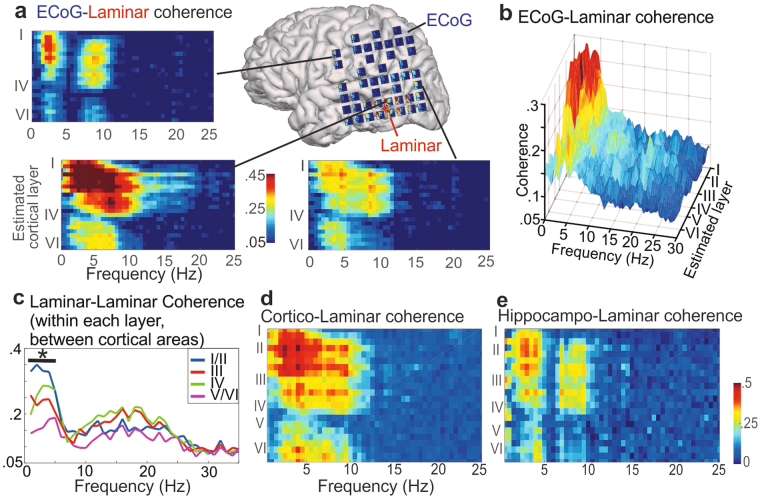Figure 3.
Slow rhythms in superficial cortical layers are coherent with other cortical areas. (a) Coherence (frequency vs. cortical depth) of individual ECoG contacts with the laminar probe in a single awake participant. There are high levels of delta/theta coherence in contacts as far as primary motor cortex. ECoG contact spacing is 1 cm. Data from 3 additional subjects is shown in Supplementary Fig. 5. (b) Average coherence (n = 4) between a laminar probe and all ECoG (surface) contacts as a function of depth and frequency. Significant ECoG-Laminar coherence was found most consistently within low-frequencies and superficial layers. (c) Average coherence (n = 3) within layers between two simultaneously recorded laminar arrays. The asterisk indicates that coherence between very superficial contacts (approximate layers I/II) was significant within all 3 subjects from 1–5 Hz. (d) Coherence between the neocortical laminar array and an example cortical SEEG bipolar macroelectrode. (e) Coherence between the laminar array and a bipolar macroelectrode recording within the head of the hippocampus. Single subject. Statistical comparisons for panels b, d and e are shown in Supplementary Fig. 6. In all cases, coherence is significant at low frequencies in upper layers.

